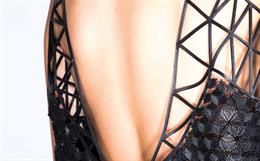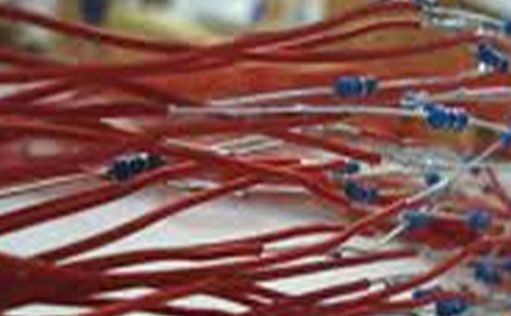The primary function of smart clothing is to sense external or a given stimuli and to respond accordingly. Stimuli can be in the form of electromagnetic radiation-ultra-violet (UV), visible or infra-red (IR); chemicals like moisture and ions; mechanical energy like pressure, break and twist. Response can be linked to shape-swelling or shrinking; colour-shade or intensity; electrical conductivity; and state of matter like phase change and crystallinity. These two main activities can be normally performed in five different stages as per end usage.
Elements of smart clothing manufacturing
a. An interface is a medium for transacting information between the wearer and devices or the environment.
b. Communication is information and power transfer between components of smart clothes.
c. Data management: Data management relates to memory, computation and data processing. Electronic components are still used for those tasks as no textile material can perform the functions to date. Yet, miniaturisation of the electronic components and development of flexible substrates has progressed so that the electronics can be incorporated into clothing in less obtrusive ways.
d. Energy management: This includes energy supply and storage device to run the wearable technology. Sensing, data processing, actuation and communication, all these usually need energy, mostly electrical power. Efficient energy management consists of an appropriate combination of energy supply and energy storage capacity. Sources of energy available to a garment include body heat, mechanical motion and radiation.
e. Integrated circuits: An integrated circuit (IC), sometimes called a chip or microchip, is a semiconductor wafer on which thousands or millions of tiny resistors, capacitors, and transistors are fabricated. An IC can function as an amplifier, oscillator, timer, counter, computer memory or microprocessor.

Figure1: Flowchart of processing of smart clothing along with the type of devices being used to perform specialised functions.
Extent of smartness depends on applications
i. Passive smart textiles: The first generation of smart textiles could only sense environmental conditions or stimulus. These include fabrics or clothing with anti-microbial or anti-static properties or bullet proof fabrics.
ii. Active smart textiles: The second generation blended actuators and sensors. Examples include shape memory, chameleonic, heat storage, thermo-regulated and electrically heated suits. The basis of a sensor is that it transforms a signal into another signal that can be read and understood by a predefined reader. Actuators respond to an impulse resulting from the sensor function, possibly after data processing.
iii. Ultra-smart textiles: The third generation can sense, react and adopt themselves to environmental stimuli. A very smart or intelligent textile essentially consists of a unit, which works like the brain, with cognition, reasoning and activating capacities.
From the above, it is clear that smart clothing differ from each other in terms of extent of intelligence provided to it. But again, the question is how to understand the degree of intelligence to be imparted in each generation.
Intelligence imparted in each generation
Comparison of extent of smartness in each generation can be understood from Figure 2, which explains that using sound-responsive photonic clothing as an example. In the first generation, smart clothing LED lights were incorporated and a button was used by the wearer to switch on and off the illumination within the dress. In the second generation, sensors, actuators and control unit were used to first sense the external stimuli, i.e. frequency of sound inside a club or pub, and then the dress started glowing in a particular colour. In the third generation, it has multiple functions starting with sensing sound and changing multiple colours depending on sound frequency.
Market
Usage, availability and consumer interest are rising for smart clothing. According to market intelligence company IDC, from accounting for 1.3 per cent of total shipments within the wearable tech market in 2016, smart apparel will go to 9.4 per cent in 2021. The total shipment of smart wearable will increase by 18.3 per cent during the five-year period. Another market intelligence firm Tractica forecast that the market for smart clothing for healthcare will grow from just $2.4 million today to $1.2 billion by 2021.
References:
1. Researchgate.net
2. Indiantextilejournal.com
3. Mouser.in
4. Digitaltrends.com
5. Asicentral.com
6. Mouser.in







